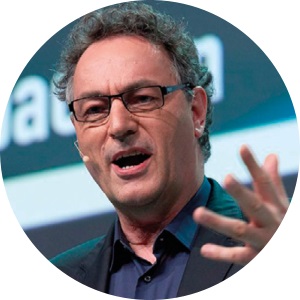A new World
There are historical moments when the future changes direction. We call them bifurcations – or deep crises. These times are now. The world as we know it is dissolving but behind it comes a new world, the formation of which we can at least imagine.
For instance, in 2020, we dramatically changed our views on how, when, and where we need to travel. The key question is: can the entire global airline industry pivot faster than any other industry has before?
Airplane manufacturers are in serious trouble but are finally beginning to dedicate much or even most of their resources to fast-tracking R&D on carbon-neutral air-planes. The next wave of disruption is already visible on the horizon: mandatory carbon taxes for every single flight ticket purchased, and for every means of transportation that isn’t carbon-neutral.
Cruise-ship operators and shipping companies are still suffering, scrambling to pivot away from combustion engines. For those that still can’t or don’t want to fly, in the future, airports will be busy adding virtual travel and holographic teleportation options. Soon, I will be able to go to the “airport” and step into a $2 million holographic studio to give three talks in three different parts of the world, all in a single day. Nice.
Working from home, remotely, virtually, or digitally, has become completely acceptable and technically feasible for almost everyone.
Gerd Leonhard is the founder and CEO of The Futures Agency. He is based in Zurich. His new book, Technology vs. Humanity, is out now published by Fast Future Publishing.
In 2019, I hopped on over 300 flights to give keynotes all over the world. No matter how hard I pushed and pulled, I just couldn’t get my clients (or their agencies) interested in remote appearances. Less than a year later, remote and virtual working has finally become a realistic, even desirable, option for many of us. No matter what business you’re in or where you’re based, working from home, remotely, virtually, or digitally, has become completely acceptable, as well as technically feasible for almost everyone. A whole new “remote working” industry is unfolding, and new technologies like holograms and mixed-reality applications are being rolled out quickly. Even Second Life is rumored to be planning a comeback (no thanks!).In 2020, digital conferencing became as normal as chat-ting on WhatsApp. Once everyone learned how to do it, there was no stopping it. Zoom has become the new You-Tube and this is only the beginning as the rising tide of #remoteverything will float all boats. Yes, we continue to struggle with significant “digital divide” issues because fast Internet access is still not available everywhere and good mics, cameras, and software are still way too expensive. But due to the Covid-19 crisis the global 5G rollout is now going into warp drive, with waves of new investments coming in, and governments clearing the regulatory hurdles even faster. Seven billion people are expected to be connected at high speeds within the next five years.
Sure, real-life human contact and face-to-face interaction was never, and will never be, replaceable by virtual meetings – au contraire, during the 2020 crisis we realized how important personal and social interaction is. As we suffered through the tough period of “social distancing” during those three terrible months in the spring of 2020, many of us (me included) started to crave for actual human contact more than anything else. Yet, we adapted because we simply couldn’t go, and now meeting, talking, collaborating, learning, and conferencing remotely is the new normal.
Unprecedented scientific collaboration is one of the most positive outcomes of this crisis and has now become the default approach to solving global scientific challenges. This represents a hugely positive change, with the potential to save millions of lives going forward. What happened in this crisis will also become a blueprint for hyper-collaboration for tackling our next big challenges: artificial general intelligence (AGI) and artificial super intelligence (ASI), geo-engineering, and human genome editing (among others).
In March, my colleague Azeem Azhar proposed that this crisis will reinforce the importance of genomic technologies: “We’re able to use rapid sequencing techniques to start to understand the epidemiological characteristics of this outbreak, by tracking genetic drift.” Today, this is on top of the global agenda.
These are only a few of the world-shaking changes that are happening in the wake of Covid-19. As the famous economist Milton Friedman once wrote: “Only a crisis – actual or perceived – produces real change.” This crisis is a precious opportunity. It would be a shame to waste it.
READ MORE ARTICLES
silica content library/articles/column-gerd-leonhard-a-new-world
A new World | Avnet Silica


